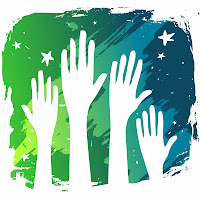THEory into ACTion
A Bulletin of New Developments in Community Psychology Practice
December, 2013
The Community Tool Box Turns Twenty
Bill Berkowitz, University of Massachusetts Lowell
This holiday edition of THEory into ACTion honors the upcoming 20th anniversary of the Community Tool Box (http://ctb.ku.edu). As readers know, these outreach bulletins focus on innovations in community practice. And the Tool Box continues to innovate, two decades after its launch in 1994.
To review the basics: The Community Tool Box provides information and guidance on community development and health. Here’s some of what you will find among its thousands of pages of free instructional materials:
More than 300 how-to-do-it modules on a wide variety of community topics, ranging from training volunteers to lobbying decisionmakers, and from budget writing to multicultural collaboration
Quick-start Toolkits on 16 key community competencies (sample titles: Creating and Maintaining Partnerships; Assessing Community Needs and Resources), with detailed outlines of key action asks
16 Training Guides, paralleling the Toolkits, each with full lesson plans, participant guides, and interactive exercises
A Troubleshooting Guide, with helpful advice for common problems a community worker might encounter
A distinctive Ask an Advisor feature, where anyone can ask a question on community development and receive a personalized answer from an expert
With four million unique visitors per year and growing, The Community Tool Box has now become a go-to resource for community workers around the world.
The Tool Box was started by Steve Fawcett and Jerry Schultz, community psychologists at the University of Kansas, together with Vince Francisco, who’s now at the University of North Carolina at Greensboro. It has since expanded to a national team with international partnerships, such as the Pan American Health Organization. The World Health Organization has also designated the Tool Box as a global Collaborating Center.
The Tool Box, though, is not resting on its laurels. So this fall the entire site was redesigned, to make it simpler to navigate and use. It’s now more compatible with smartphones, tablets, and other mobile devices. Work is also proceeding toward completion of an Arabic translation, to complement the fully-translated Spanish version. In addition, a drive is under way to build a long-term endowment. The newly-designed Community Tool Box made its formal debut in October; those who haven’t visited the site recently are encouraged to check it out and test it for themselves.
But another near-term Tool Box goal is to increase its interactivity, and especially include contributions from leading community groups and organizations. In that way, the Tool Box can publicize the distinctive work of others to a larger, global community. (Users now come from over 100 different countries; a steadily increasing percentage of traffic now comes from outside the United States.)
What might those contributions be? Basically, they would include community-building items of interest to a wider audience. For example, users are invited to send in an item to the Tool Box blog; add to a growing collection of community success stories; share a community tip, tool, example, resource, or innovation; or, as a different idea, those groups with “action“ sections on their web sites might develop links to Tool Box content.
The Tool Box is also interested in other contributions or suggestions users and readers may have; they are invited to contact toolbox@ku.edu, or call (785) 864-0533. Your own community-building content and your ideas will further strengthen community life. But another purpose can then be accomplished too: to strengthen a sense of community among all of us who do the critical work of community building with others. We can work together to achieve our common goals.
This is one of a series of bulletins highlighting the use of community psychology in practice. Comments, suggestions, and questions are welcome. Please direct them to Bill Berkowitz at Bill_Berkowitz@uml.edu.












